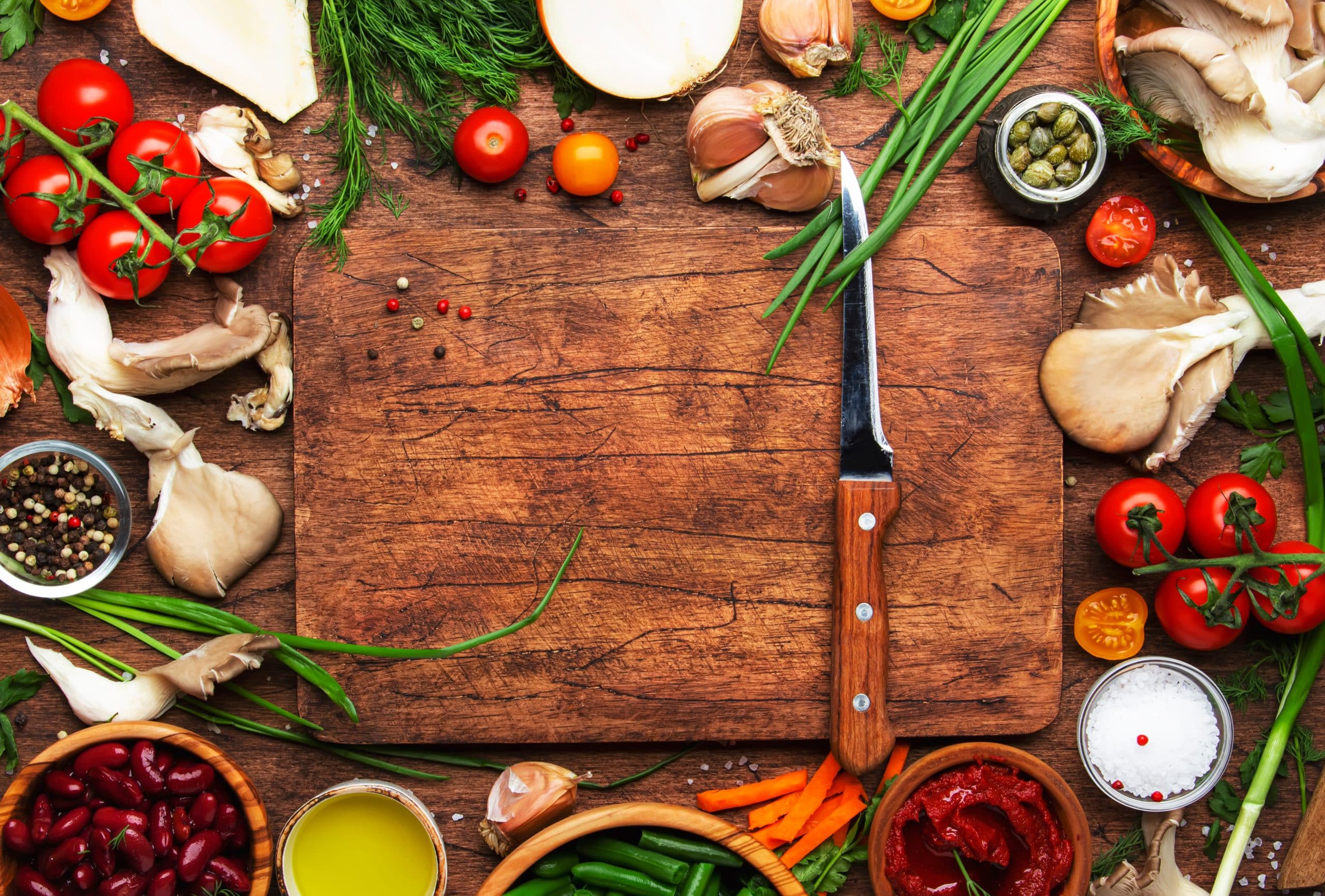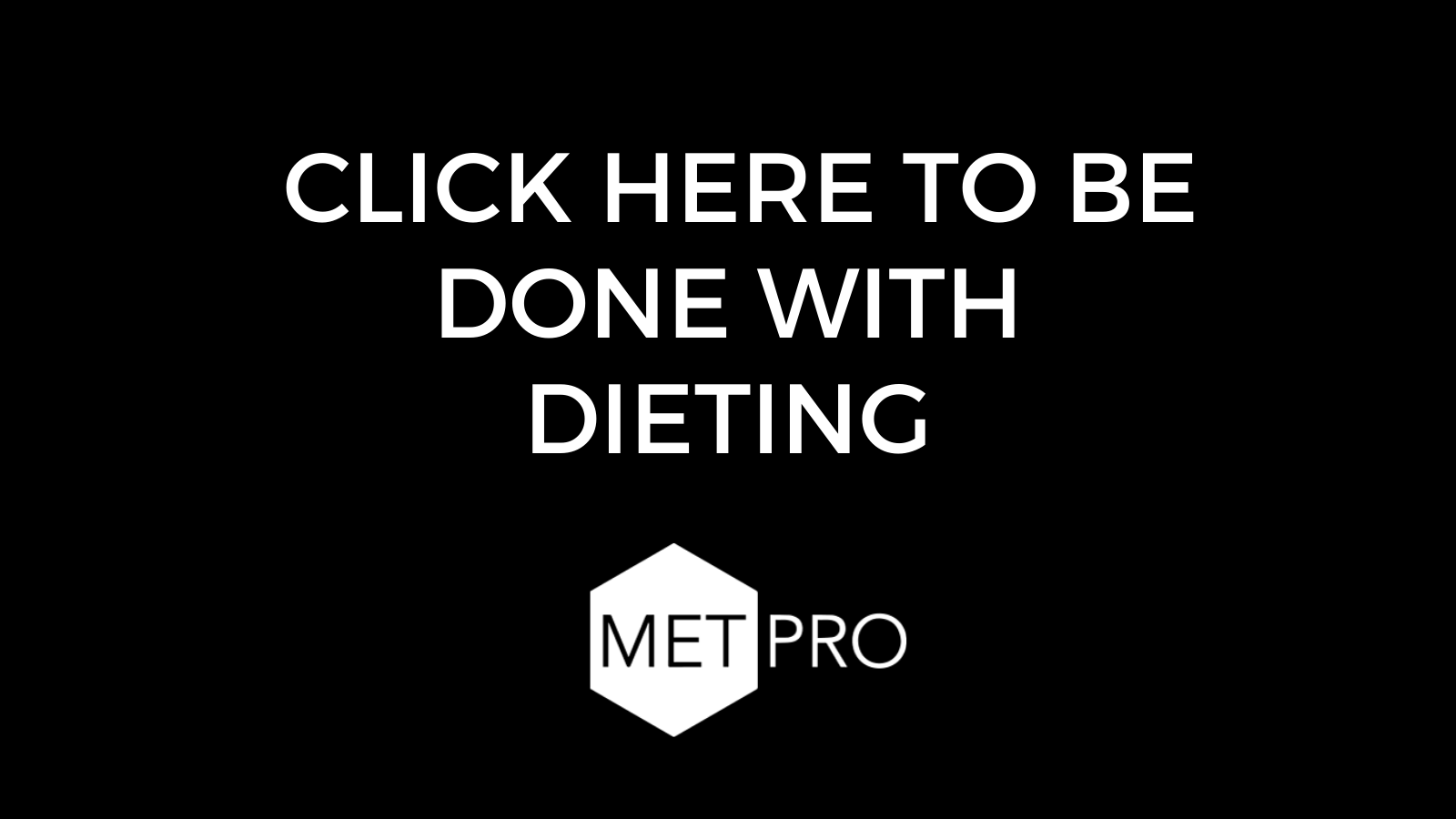In this episode, I am joined by MetPro Director of Coaching, Megan Omli. We are going to be discussing Meal Planning 301. At MetPro, we know our clients like to get help with meal planning, but also everyone has a different level or skillset in cooking and planning. This episode will be geared toward a person who has been on MetPro for a while now. They've mastered the basics of meal prepping and they are looking to make a hearty meal that is more complex, perhaps a lasagna for the family to share.
This episode will be a great place to start that. However, if that isn’t you and you’re just getting started, we have also created a meal planning discussion for beginners and for those that are a little bit further along in their journey as well. You can check out Meal Planning 101 and 201. Megan, thank you so much for joining me.
Thanks for having me. This is like you've arrived at your MetPro meal planning, measuring and understanding, and now you get to get into it. If there’s somebody who loves to cook, this is a great place to be like you’re getting so have some fun.
This person is comfortable with the multiple ingredients. They know what their serving sizes look like because they have their scale and they are ready.
If you’ve tuned in to other episodes, you’ll know that Megan's favorite thing is a food scale.
What about supplies for this level? What do we need? What do we need on hand?
Your brain. You need your knowledge on this one. If you try to jump into this and you try to create these things right away, it can lead to frustration and, "This is too hard and I can't cook anything.” You will get here. It does not take long if you keep things simple at first and then jump to this. I don't know how to not cook MetPro anymore. It just all happens and it works, and you'll get there too. I'm not talking in six months. I'm not talking that long. I'm talking in weeks' time. You'll be here soon if you're not already here.
How do we know if we found a good recipe that we're going to be trying for this more advanced difficulty? Are there things we should be looking for?
A few things. I'll back up a little bit. You're going to want to decide who are you prepping this for. If you decide, "I'm going to have these lettuce wraps, for example, for just me for lunch for the next three days. You're going to want to look at your phase. You're going to want to understand, “For one lunch, I've got two meal carbs, two proteins, two veggie carbs and one fat,” let's say. That's close enough. You want to have this meal where you're having it for three lunches. You know that then you're going to need six servings of that meal carb, six servings of that protein, six servings of that veggie carb, and three fats.
You're going to want to multiply that through. That's if you're cooking just for yourself. Let's say you're cooking dinner for your family. You're going to want to know what you need, but then also what your family probably wants. If you're using say a recipe and it calls for 1 pound of chicken but you know you need 4 ounces. Your two sons and your husband are going to want 6 ounces each. You're going to need to adapt that recipe and maybe cook 1 pound and 6 ounces of chicken or cook 2 pounds and double it and then you've got your leftovers for your lunch the next day. I’m a big fan of that one. You're going to want to think about what your family needs versus what you need, and then multiply it that way. You're going to want to think about it by meal for you but then add your family, or if you're doing this for multiple meals for yourself, multiply that through for however many days that would be.
I'm guessing if this is the first time you're making this for your family, you might need to do a little trial and error. You might need to play with you knew off the top of your head that your son might want 6 ounces each of that chicken, but maybe other people don't know that. It might be trial and error the first couple of times.
Absolutely. Especially when cooking for the family. In that case, dish yourself first. You get what you need then let the hungry wolves come in and grab what they need. Sometimes you got to do it. When you look at a recipe, that's going to have more advanced difficulties. I'm talking stews. I mentioned those lettuce wraps and chilies. Maybe you want to create a frittata for a girl's brunch that you're going to or shrimp ceviche or those kinds of things. They sound like, “Wow,” but they can be simple too. Those are things that you'll want to look at recipe-wise and start to dial in, “Who am I cooking for?”
The things that you need to put all together before you serve it, that's the recipe that I'm talking about. We talked about the tacos or the spaghetti where you're still measuring as it hits your plate. These things would be cooked all together in the pan and divided after the cooking with everything mixed. You can't weigh and measure at that point because you've got the knowledge of what it should look like.
This is where you're using that. I know that I can get my 4 ounces of chicken, so it looks like this ish. If it's got sides in there like vegetables, you're going by your knowledge. You can load up on the veggies. You can put the protein on and then eyeball it. You don't need to pull out the scale again and reweigh everything.
No, because it has all been cooked and mixed together. You've already measured at the beginning, and then you throw it all in the pot. It’s like those one-pan meals or that kind of a thing. That's where you're going to take that adjusted on the front end and put it in. If you decide, "I'm cooking for myself for the next three lunches.” I've got my 6 ounces of protein. I've got my three fats. I've got my 6 serving sizes of meal carbs.
I've got that quinoa, that ground beef and the carrots. It all goes in. When it comes out, you're dividing by three and putting one here and one here, each container and shoving it in the fridge. That's the thing that I'm meaning by that advanced knowing how to do that. If you're doing it for your family, that's almost like an expert level because you've got more but you know, "I'm going to take 1/8 of this then they're going to have the rest.”
When you talk about the difference in these levels, we've talked to beginner, intermediate and advanced through our different episodes. Why is it important to wait before we're getting into this more complex meal?
You got to know what it needs to look like. What I mean by that is if you're only taking 1/8 of what you've prepped, you can look at that but there's some math here. You need to know, “I've used 1 pound, 6 ounces of chicken and this much quinoa. How much of that is mine?” There's just some math here. You're not going to get it down to the grain. Understand that quinoa might have ended up a little bit more on this side of the pot.
That's okay. If you divide it by three for your lunches and you've got, “That looks a little bit heavier on the sweet potato side of things,” it's okay if we're talking nitty-gritty. If you look at it and you're like, “That has way more,” then maybe you steal a little bit of that and put it on this side. It's not exactly divided by. There's some math here. Until you're comfortable with MetPro, it's a good idea to back up and not get too complex.
I'll say that but I mentioned shrimp ceviche. I'll use this as my example. If you pull that up on AllRecipes.com, where we have a great one on our academy site too, you're going to get in there and recognize, The only items that I need to account for, a lot of that stuff is free foods. I only need to account for the shrimp, the oil and maybe one or two other things,
and to the heart's content typically on the veggies. Something that looks more complex sometimes can be rather simple if you get in there and find, It’s a bunch of veggies, then I count my fats and my protein,
or what have you.
At that point, you're making sure you don't go overboard on the shrimp and the oil. Those are the two things you got to worry about.
Also deciding, “I'm going to prep this for three males.” I wouldn't use this shrimp ceviche as leftovers per se, but that's what you would do and you'd make sure you have enough shrimp for those three meals and enough oil for those three meals and the rest is addition.
Surprisingly, the more complex is more simple to explain. What have we missed? What else does the audience need to know about this more advanced level?
Don't get frustrated with it. If you're finding that you're getting frustrated with this type of cooking, go back and revert a little bit. Go back into things that are simpler for a little bit, and then come back or maybe try a couple of these each week. That can be great when you've got more time to put into it or think. Once you feel like you know how much visually two proteins are of chicken or fish or what have you, your brain spray space is freed up to not have to think of that, and you can think of what the recipe and what the end results can be.
Megan, I do have a question though. I have to admit that this part of it intimidates me. I have a recipe. My family’s favorite is ham and beans which is totally Southern. I say that because Southern comes with fat and a lot of it. I thought I could never have it again. Are you saying that it's possible for me to still have ham and beans? Is that a thing, just maybe?
Fill me in a little bit more. California girl here. I did live in the South for a period of time, so I’ve experienced that whole lot of fat thing, which is great. Delicious, nonetheless. Fill me in on what this looks like.
In a crock-pot, you would put navy beans or brown beans overnight and you would put water in it. You would put a ham hock because again, Southern. You would throw basically a big chunk of ham that's on the bone in the crock-pot and you would let it cook all day. If you somehow got lucky, you would serve it with cornbread because that's what we do.
I'm not going to be able to guarantee you the cornbread. Flavor-wise, I'm not totally sure. Maybe it works with corn tortilla, rice or something like that. Maybe you're manipulating that too. Follow up question, the beans. What liquid are you putting in with that? Is it water?
Just water.
You've got enough from the ham going on. You know the weight of that ham hock going in typically, so that's going to be a key. I'm going to try to do this off the top of my head. I might be able to incorporate both but for simplicity's sake, let's say that you are just cooking for yourself. Not maybe your family. You look at the way to that ham hock.
No one else in my house will eat it, so this is a great example.
I might be able to do both. Let's say you've got 1 pound and you know you need 4 ounces. You're going to look at that and go, "That's going to be basic 4 ounces at each meal,” I should say. That's going to be four meals worth just of that ham. That's one thing you need to know, then you need to know beans. Guess what? We've got another complexity here. Bear with me. I've never cooked ham and beans before.
You've got the beans and you know that is a carb, primarily, but you've also got some protein to account for in that. You know you've got your 4 ounces at each meal but maybe now, we say you've got five meals separately or maybe six. Let's back up to the beans. One-third cup of beans is going to be one meal carb and a half serving of protein. You're going to want to know how many beans go into that crock-pot.
If you go 1/3 cup, 1/3 cup, that's my two meal carbs and one full protein. I'm going to do that four more times because I did for four days because I have a 1-pound ham hock. Now the whole thing cooks and it comes out. You're thinking, “I need to account for those beans.” Here's where I'm going to try to get fancy in my brain with math, which is not my strongest suit, my mother would tell you that.
Wheels are going in my brain, so excuse me if I totally butcher this last part. It is possible. That's the point. You're going to pull it out and you're going to go, "I need 2/3 cup of beans at each one and I need 4 ounces of ham.” When I account for that one serving of protein that I'm getting, that's going to drop me down to 2 ounces of ham. Maybe that's where you start. Maybe when you put everything in, you then say, “I need a few more beans because now this is going to stretch me six meals for the 1 pound of ham because I don't need the full 4 ounces. I need 2 ounces at each.
Now, when you pull it out, you're not going to be like, “How many ounces of ham is in this serving?” You're going to go with your ladle or what have you, or you might spread it out and go, "I need six servings of this.” I'm estimating that at six but I think it might be seven, then you're going to ladle it in until it looks equal into seven bowls.
It’s possible. Maybe one day you eat it with corn tortillas, and the next day you eat it with brown rice and you don't tire of it or you stick it in the freezer. You don't want to eat those seven days in a row. You might pop some of those in the freezer but it might work. You might be able to do that. To reiterate, if you have a meal that you or a family’s favorite, ask your coach. They can maybe help you manipulate it. Don't send your coach one that's packed full of raw sugar or packed full of milk and condensed milk or pineapple juice. Those sorts of things get difficult or are not allowed. A lot of things that are simple, which cooking from scratch like family recipes, can sometimes be made into. You get it on MetPro. Go make your ham and beans, Crystal.
I’m doing it. I’m so excited. That’s very helpful. Megan, thank you so much for your time. Can you give people your email address to reach out to you if they have any questions?
That's all for this episode. You can find all of the MetPro Method episodes anywhere you get podcasts or you can go to MetPro.co/podcast. Please be sure to follow the show and rate and review because that lets other people know what they can expect. You can learn more about MetPro at MetPro.co. I'll be back in the next episode. Until then, remember, consistency is key.






